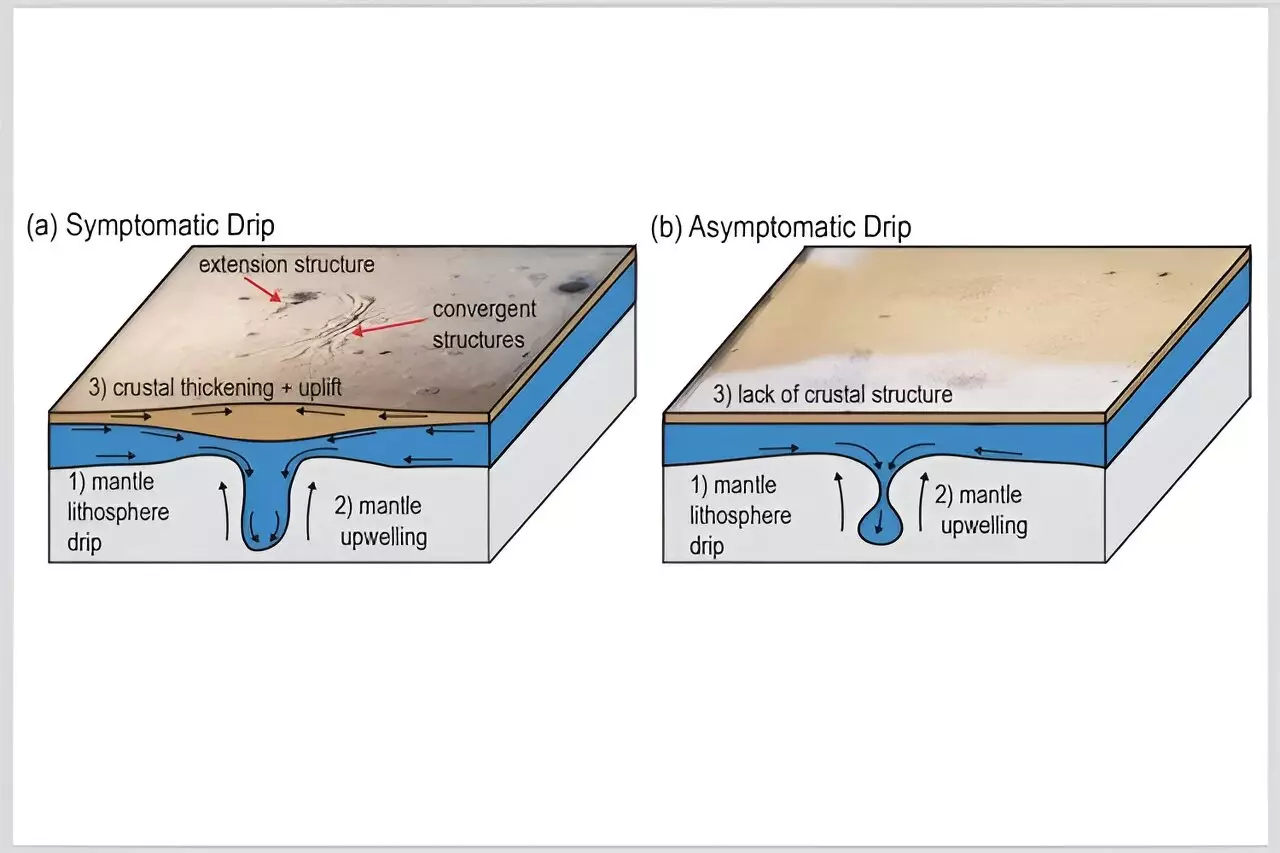Recent research has illuminated the complex geophysical dynamics at play in the Konya Basin, located in the Central Anatolian Plateau of Türkiye. This study, spearheaded by Earth scientists at the University of Toronto, provides essential insights into how the basin is undergoing a gradual transformation over millions of years. By integrating advanced satellite data with geological, geophysical, and geodetic observations, the researchers have unveiled a captivating pattern of land deformation that not only enriches our understanding of Earth’s tectonic behaviors but also raises intriguing questions regarding geological processes on other celestial bodies, such as Mars and Venus.
At the heart of this study lies the concept of “multi-stage lithospheric dripping,” a unique phenomenon that describes the instability of the Earth’s crust and upper mantle materials. This process occurs when dense rock fragments detach from the lithosphere and descend into the more fluid mantle layer. As these fragments sink, they create substantial geological features, including basins and mountain ranges, atop the earth’s surface. The research team utilized experimental simulations alongside extensive data analysis to clarify the mechanisms underpinning this phenomenon, particularly the mysterious subsidence of the Konya Basin within the context of a rising plateau.
Lead researcher Julia Andersen, a doctoral candidate in Earth’s sciences, emphasized the significance of these findings: “The satellite data revealed a circular feature indicative of crust subsidence in the Konya Basin. This prompted our investigation into the underlying geophysical aspects, ultimately leading us to identify a seismic anomaly that supported the presence of high-density material associated with mantle lithospheric dripping.”
What makes this research particularly compelling is its potential applicability beyond the confines of Earth. As the researchers detailed, the physicochemical processes observed in the Konya Basin resemble tectonic activities identified in the Arizaro Basin located in the Andes Mountains of South America. This suggests that the lithospheric dripping phenomenon may manifest in diverse geological settings across the globe, thereby expanding our understanding of tectonic processes that govern plateau regions.
A noteworthy observation is that the Central Anatolian Plateau has risen significantly—by as much as one kilometer—over the past ten million years, attributed to lithospheric dripping. Co-author and esteemed professor Russell Pysklywec elucidated: “The lithosphere’s thickening and subsequent dripping leads to surface basin formation, which subsequently experiences uplift as the dense material succumbs to gravitational forces and sinks deeper into the mantle. This cyclical process reveals that events such as these are not merely sporadic occurrences but part of a larger tectonic narrative, driving the intriguing subsidence patterns witnessed in the Konya Basin.”
The research underscores the interconnected nature of geological processes, highlighting the simultaneous occurrences of uplift and subsidence. Andersen noted, “The relationship between plateau uplift and basin formation showcases a dynamic system where subsidence processes can complement ongoing tectonic uplift.” This finding challenges prior assumptions that elevated plateaus and subsiding basins are distinct phenomena, instead suggesting that they are intimately linked through lithospheric evolution.
A remarkable aspect of this investigation is the innovative methodology employed to model the dripping phenomenon. The scientists developed a laboratory set-up featuring a tank filled with a silicone polymer fluid designed to replicate the fluid lower mantle’s properties. By carefully layering materials that mimicked the upper mantle and Earth’s crust, they illustrated how the drip initiation affects the landscape.
Through a series of experiments, the team observed critical phases of dripping, capturing high-resolution images to analyze the dynamism over time. “We tracked both primary and secondary drips, noting how these processes intricately produced subsidence without causing significant horizontal deformation,” Andersen elaborated, indicating that the findings could reshape conventional wisdom about mantle dynamics.
The insights gleaned from the Konya Basin study not only contribute to our understanding of Earth’s geological complexities but also open avenues for exploring planetary geology on other celestial bodies. The recognition of lithospheric dripping as a universal process enhances our comprehension of tectonic activity beyond Earth, suggesting a compelling framework for future interdisciplinary research bridging geology, planetary science, and tectonics. As we continue to unveil the intricacies of our planet, studies like these remind us of the dynamic and ever-evolving nature of the Earth beneath our feet and the vast potential for discovery beyond our home planet.


Leave a Reply